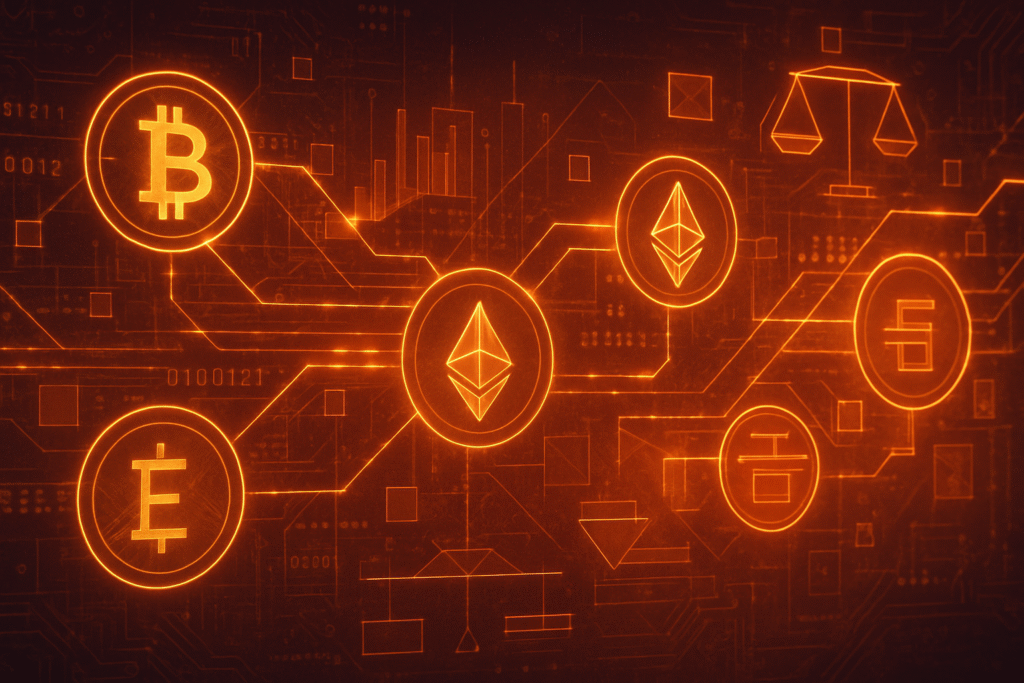US Senate Finance Committee Grills Experts on Crypto Tax, Signaling Major Regulatory Shift

Washington D.C. – October 1, 2025 – The United States Senate Finance Committee convened a pivotal hearing today, titled "Examining the Taxation of Digital Assets," delving into the intricate and often perplexing world of cryptocurrency taxation. Chaired by Senator Mike Crapo (R-Idaho), the session brought together a panel of leading experts to dissect the challenges and propose solutions for modernizing the nation's tax code to accommodate the rapidly evolving digital asset ecosystem. The hearing, which proceeded despite looming government shutdown concerns, underscores the growing urgency within Washington to establish a clear and equitable tax framework for cryptocurrencies.
This landmark hearing is not merely a theoretical discussion; it represents a significant step towards concrete regulatory action that could profoundly impact every facet of the crypto industry, from individual investors and traders to large institutional players and Web3 innovators. The immediate community response is one of cautious optimism, with many hoping for clarity and simplification in an area that has historically been fraught with ambiguity. The outcomes of this hearing, and subsequent legislative efforts, are poised to reshape how digital assets are integrated into the broader financial system, potentially unlocking new avenues for growth and mainstream adoption, or conversely, stifling innovation if not handled judiciously.
Market Impact and Price Action
As the "Examining the Taxation of Digital Assets" hearing concluded today, October 1, 2025, the immediate market reaction across the cryptocurrency landscape remains to be fully observed. However, the very act of such a high-profile committee addressing crypto taxation signals a critical juncture for the market. Historically, major regulatory discussions, particularly those concerning taxation, tend to inject a mix of anticipation and apprehension into digital asset prices. While specific price movements of tokens like Bitcoin (BTC) or Ethereum (ETH) were not immediately volatile following the hearing's close, the long-term implications could be substantial.
The discussions around "double taxation" for miners and stakers, as well as the push for a "de minimis" tax exemption for small transactions, have the potential to significantly alter the compliance burden and perceived value proposition for many crypto participants. Should these proposals gain traction and translate into legislation, it could alleviate a major pain point, potentially boosting retail adoption and reducing friction for everyday crypto use. Conversely, any perceived increase in regulatory burden or stricter enforcement without clear guidelines could lead to short-term market corrections as investors adjust to new compliance requirements. Trading volumes and liquidity might see an uptick in the coming weeks as market participants digest the implications and position themselves for potential legislative changes. In the past, similar discussions around clear regulatory frameworks, such as the bipartisan stablecoin legislation signed earlier in 2025 by President Donald Trump, have often been followed by periods of consolidation or gradual upward trends as clarity reduced systemic risk.
Community and Ecosystem Response
The crypto community, ever-vigilant on regulatory developments, has been buzzing with discussions surrounding the Senate Finance Committee hearing. Social media platforms, particularly Crypto Twitter and Reddit, are abuzz with sentiment ranging from hopeful anticipation for tax simplification to cynical skepticism regarding Washington's understanding of digital assets. Influencers and thought leaders are actively dissecting the testimonies, with many highlighting the bipartisan push for a de minimis tax exemption and the urgent call to address the "unfair double taxation" faced by miners and stakers. Figures like Senator Cynthia Lummis, a vocal pro-crypto advocate, are being praised for their persistent efforts to modernize the tax code.
The discussions around classifying digital assets and the need for clearer guidance from the Treasury Department and IRS are resonating deeply within the DeFi and Web3 communities. Protocols that rely heavily on staking mechanisms, for instance, are keenly watching how the "double taxation" issue evolves, as a favorable resolution could significantly de-risk participation. NFT projects, too, are interested in how small transactions and digital collectibles might be treated under new tax regimes. While the Ranking Member, Senator Ron Wyden (D-Ore.), expressed criticism over the timing amidst a potential government shutdown and pointed to "shadowy rules" contributing to the national tax gap, the overall sentiment among advocates is that this hearing represents meaningful progress. The collective hope is that the momentum generated will lead to practical, user-friendly tax solutions rather than additional complexity that could stifle innovation and push talent offshore.
What's Next for Crypto
The Senate Finance Committee's hearing marks a critical inflection point, with short and long-term implications poised to ripple through the crypto market. In the immediate future, market participants should anticipate increased scrutiny from the IRS as the public spotlight intensifies on digital asset taxation. However, the overwhelming consensus from the hearing points towards an urgent need for clearer guidance from the Treasury Department and IRS, which could provide much-needed interim relief for taxpayers grappling with existing ambiguities. The proposal for a "de minimis" tax exemption for small transactions (e.g., under $300 with a potential $5,000 yearly cap) appears to be gaining significant bipartisan traction and could be one of the first tangible outcomes.
Looking further ahead, several potential catalysts and legislative developments are on the horizon. Senator Cynthia Lummis's legislation, introduced in July 2025, specifically aims to update the tax code for crypto assets, including addressing double taxation for miners and stakers. On the House side, Representative Max Miller is reportedly working on his own bill addressing digital asset taxation. Furthermore, the White House's July 2025 report advocating for digital assets as a new asset class and tailored tax rules adds considerable weight to the legislative push. Proposed regulations from the Treasury and IRS on specific international tax provisions are expected in the first six months of 2026. Strategic considerations for projects and investors will increasingly revolve around robust compliance frameworks and adapting to potentially new reporting obligations. The most likely scenario is a phased approach, starting with clearer guidance and potentially followed by targeted legislative reforms, ultimately aiming to create a more predictable and fair tax environment for digital assets.
Bottom Line
Today's hearing by the US Senate Finance Committee on crypto asset taxation is a watershed moment for the digital asset industry. The key takeaway for crypto investors and enthusiasts is that regulatory clarity, particularly concerning taxation, is no longer a distant aspiration but an active legislative priority. The bipartisan efforts to address issues like "double taxation" for miners and stakers, and the strong advocacy for a "de minimis" tax exemption for small transactions, signal a genuine intent to make crypto more accessible and less burdensome for everyday users.
The long-term significance of this hearing cannot be overstated. By directly confronting the complexities of digital asset taxation, Congress is laying the groundwork for a more mature and integrated crypto economy. If successful, these efforts could remove a significant barrier to mainstream adoption, encouraging greater participation from both retail and institutional investors. Important dates and metrics to monitor include the issuance of new guidance from the Treasury and IRS (expected in early 2026), the progress of Senator Lummis's and Representative Miller's respective bills, and any further hearings or legislative markups, particularly those concerning broader crypto market structure legislation which was reportedly delayed until later in October 2025. The journey towards a comprehensive and fair crypto tax framework is ongoing, but today's hearing unequivocally demonstrates that significant progress is being made.
This article is for informational purposes only and does not constitute financial or investment advice. Cryptocurrency investments carry significant risk.
More News
View More




Recent Quotes
View More
Quotes delayed at least 20 minutes.
By accessing this page, you agree to the Privacy Policy and Terms Of Service.